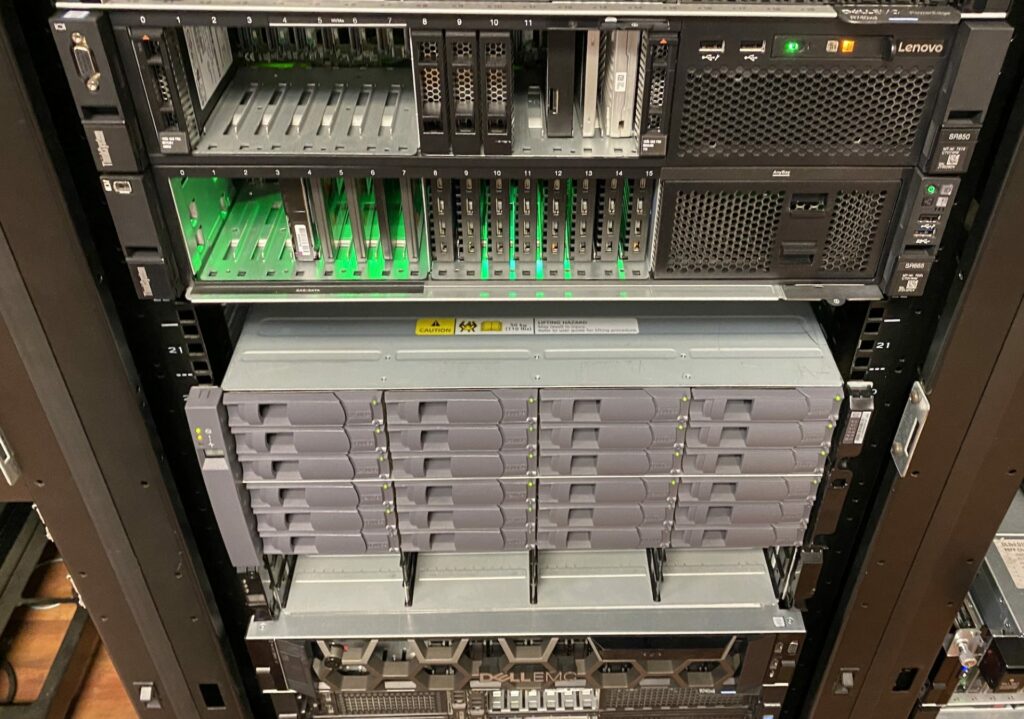For small Chia farmers and plotters doing their work on a single system, life is pretty easy, even if the Chia lotto gods are unkind. But as your plotter cranks along, many are finding it’s optimal to run separate plotting and farming rigs. Taken a step further, as we’ve found in our lab, it’s important to introduce harvesters. This delicate balance though is complicated by one very important thing. You can only have one full node per external IP or you risk missing block validations. In this piece, we’ll talk about organizational structure and how to best balance multiple Chia plotters, farmers, and harvesters so as not to block your chances of a win.
For small Chia farmers and plotters doing their work on a single system, life is pretty easy, even if the Chia lotto gods are unkind. But as your plotter cranks along, many are finding it’s optimal to run separate plotting and farming rigs. Taken a step further, as we’ve found in our lab, it’s important to introduce harvesters. This delicate balance though is complicated by one very important thing. You can only have one full node per external IP or you risk missing block validations. In this piece, we’ll talk about organizational structure and how to best balance multiple Chia plotters, farmers, and harvesters so as not to block your chances of a win.

Don’t Depend on uPnP, Forward Port 8444
We’ve come across this problem too many times to count now. The default way Chia deploys is with uPnP enabled, to open port 8444 for you. In large or complex environments though, uPnP is generally disabled at the firewall (for good reason) and not to be depended on. The best way to handle this is to set a port forwarding rule on your router for port 8444 going to your farmer. We again saw this in our own environment where uPnP wasn’t working the way it should have. With the port being forwarded directly, connections went from a few to maxed out at too many to count.
Our Loss is Your Gain
It’s a funny thing to think about our lab as being experts in all things Chia. We definitely are not, we’re plodding along like most others. Our growth however was simply accelerated by the fact that we review storage and servers for a living, so we have a lot of extra gear on hand.
In our rush, we made a fundamental mistake in our structure, and a bunch of small farmers were doing the same from what we see on Reddit. This primer on how to manage larger Chia farms will go a long way to help. Note, if you’re just starting out, please invest an hour and watch or listen to our Chia Masterclass with JM, storage head at Chia.
In our initial rush to put hardware online, we stood up every single server as its own full node. We kept spending a ton of time syncing them from scratch and even worked out ways to make them sync faster. During this initial phase we had one win and figured all was good, it worked. What we didn’t realize until a few days later was we lucked out and we nuked our chances of more wins. You can only have one node running per external IP.
One Full Node and Lots of Harvesters
We then quickly killed all those excess nodes and switched them to harvester duty where they communicated with the main node. This requires connecting them in a layout where you have one node and/or farmer. That single farmer talks to the outside world and relays information back and forth from your harvesters. This guide on the Chia website covers the basics of it. TLS is used so each harvester can securely talk to the farmer, and you need to generate keys based on the CA from your main farmer.
In our current environment, we have one farmer and 10 servers acting as plotters and harvesters. You don’t need to plot on your harvesters, but at the rate, we were plotting we wanted those online as soon as they were created. At our peak, we were cranking out around 800 plots a day.
Again this was just brute force, and nowhere near economical. We also ran out of storage space in like 3 days. The way we quickly ramped up though forced us to work through these problems that would take forever if we didn’t have time to win of 1 day, and wondered what was going on a week after the last win. Hopefully, this article helps growing farmers avoid the pitfall we face-planted into.
The only downside is that the Chia GUI doesn’t really organize multiple harvesters very well currently. If using the GUI on your farmer, you’ll see the harvesters reporting, but it doesn’t aggregate your total plots or update the aggregate time to win.
Even the debug log file set to INFO doesn’t bring the tally forward yet. This is a substantive failing on the side of the Chia team and wouldn’t be all that difficult to resolve. That said, they’re probably all hands on deck figuring out pools and fighting off baddies/bugs.
Read More:
- Our Favorite Chia Plot Migration
- Best Cheap SSDs for Chia Plotting
- Best Budget Chia Plotting Rig
- Chia farming on Raspberry Pi
- Keep your Chia Sync Online
- Cooling is critical for chia plotting speed and safe farming
- Best Budget Chia Farming Rig
Engage with StorageReview
Newsletter | YouTube | LinkedIn | Instagram | Twitter | Facebook | TikTok | RSS Feed
